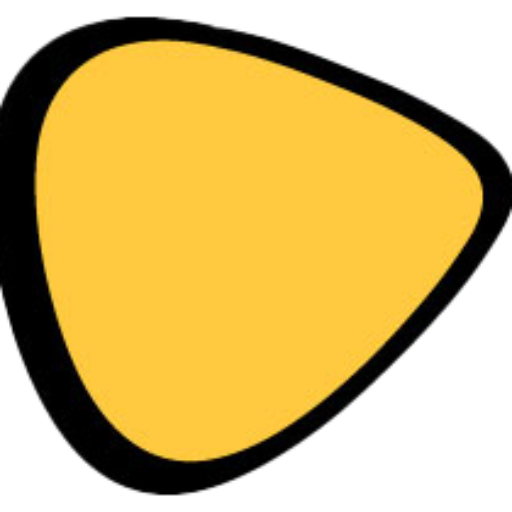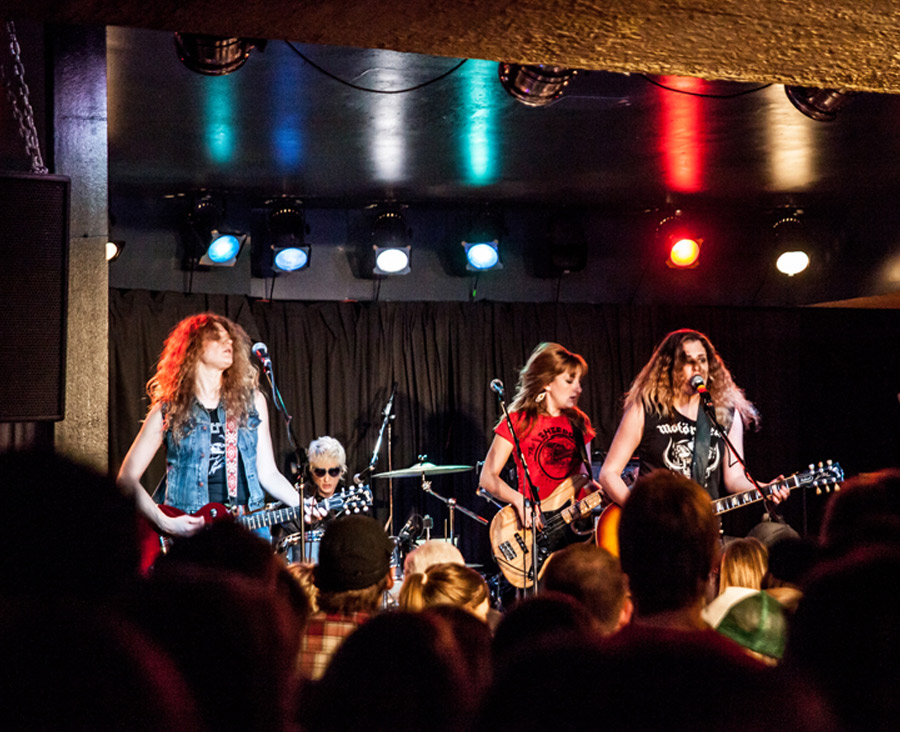“There’s a giant panting woman…” laughs Tara.
“…6-feet tall…” Maïa says, laughing now too.
“…chasing him down the sidewalk,” says Jasmine.
We’re having lunch—well, trying to chew amid the hysterical laughter—and the women of Ladies of The Canyon are recounting to me the story about lead singer Jasmine Bleile running down fellow Montreal musician Win Butler (Arcade Fire) to invite him to their album release show (spoiler alert: he couldn’t make it).
“I think I left an impression” she says.
Leaving an impression is something Ladies of the Canyon (LOTC) are doing across the country as they tour the release of their latest album, Diamond Heart (catch them while you can, tour dates here).
I meet up with them again that night, at a small club show where they opened for Tim Hicks. The ladies have got some great opening gigs recently, from Serena Ryder to the Barenaked Ladies.
The club is hot, packed with flannel-clad guys, women in short jean skirts, and a vista of ball caps and cowboy hats. It’s a country crowd, but they’re digging the so-called So-Cal soft-rock of the Ladies.
Rock warrior Jasmine stands even taller than her sidewalk stature, elevated by the stage. Her wild red hair flies everywhere, as she and her bandmates rock out, hard. This may be considered “soft-rock,” but it’s still rock, and Ladies of the Canyon make you and your panties want to run wild in a flurry of drinking, smoking, heartbreak, womanhood and psychedelic tunes.

It’s a refreshing recklessness. Ladies, if you haven’t heard them before, put your earphones on, grab a drink, and get ready to revel in a feminine space that isn’t crowded with baby-bumps or the stink of diamond-ring-desperation. It’s fun, rollicking, and empowering music.
Telling the tales of strong women, songs such as “Alameda,” and “She Crossed The River” bring a wild and powerful femininity to the scene.
“They’re this mostly female audience I would say, a lot of them are younger females, they’re looking to have an experience, they’re looking to be inspired, they’re looking for a reason to be happy, they’re looking to share as women, in music—It’s mind-blowingly amazing to be up there, and then to meet all those women after the show,” says Maïa of opening for Serena Ryder.
But of all their female-empowering songs, it’s “People of the Sun” that brings an additional awareness to the Canadian sisterhood.
“[People of the Sun] speaks about the issue of all of the first-nations women who have gone missing or been murdered throughout Canada,” says Jasmine. “We do want to get it out there as much as we can…we would like to bring some light to the issue.”
So, we’re gonna take a mirror to the Ladies’ limelight, and redirect it onto this important cause. Read on…
The RCMP recently released a report estimating there have been 1,181 cases of missing and murdered aboriginal women since 1980.
Last May, the now-former United Nations Special Rapporteur on the Right of Indigenous Peoples, James Anaya, released his report on the situation of indigenous peoples in Canada, saying sternly: “It is difficult to reconcile Canada’s well-developed legal framework and general prosperity with the human rights problems faced by indigenous peoples in Canada that have reached crisis proportions in many respects.”
The report includes a succinct review of the programs in place that have, for several years, been working to help the situation. So, if you want to know what Canada’s doing, from an impartial 3rd party perspective, read paragraphs 34-37 of his report.
In fact, just the other day one of the police squad’s mentioned in the report was successful in solving one of the cold cases.
However, as the former Special Rapporteur concludes, there’s a lot more work to be done. He goes on to say that a nation-wide inquiry “could provide an opportunity for the voices of the victims’ families to be heard, deepen understanding of the magnitude and systemic dimensions of the issue, and identify best practices that could lead to an adequately coordinated response.”
Only from a national public inquiry will the issue be researched from multiple angles, providing a holistic and unified approach to creating change.
Go read up, the links below are a great place to start. Sign a petition, write to your local MP, or just spend a few minutes scrolling that article that pops up in your feed about the issue.
You don’t have to run through the streets to leave an impression—although, if you’re LOTC that works too.
Give a damn
OK, so you know nothing about the missing and murdered aboriginal women issue, what can you do?
Read. It’s that simple. Yes, there’s a lot to read, yes it’s a big issue. But as a Canadian, and particularly a Canadian woman, do your fellow national sisters a favour and start reading about it, now.
Any time you see an article—online, or in the paper—about this issue: Stop and read it. It only takes a few minutes.
Want to know more? Good on ya’. Check these out:
Native Women’s Association of Canada’s recommendations
UN’s report on the Situation of indigenous peoples in Canada
Assembly of First Nation’s report to the United Nation’s Special Rapporteur (see p. 70 “Ending Violence against Indigenous Women and Girls”)

